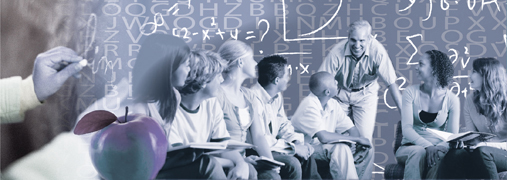“The University of Oslo, or the Royal Frederik’s University as it was known as until 1939, has been educating teachers for as long as it has existed,” says Geir Knudsen, Assistant Professor at the Department of Teacher Education and School Research.
This did not begin by educational science gaining a foothold at UiO a hundred years ago. Norway needed civil servants to administrate a young nation. And when the university was founded in Christiania in 1811, teacher education was introduced as a philological vocational programme of study on a par with those for priests, doctors and lawyers.
Mutual influence
Most of the teachers in upper secondary education in Norway have graduated from the university after completing studies in either the humanities or the sciences. Professional development at the university has influenced the school subjects and vice versa. In 1860 teacher education was divided between two faculties: the Faculty of Humanities and the Faculty of Mathematics and Natural Science. In 1869 the secondary schools introduced a natural science curriculum that was equal in status to the latin curriculum.
The education was further strengthened through the introduction of major subjects and minor subjects at both teaching faculties in 1905. At the same time, the Pedagogisk Seminar (teacher training course) was established as a half-year supplementary course in educational theory and practice in addition to subject-specific studies. Otto Anderssen, who was the first to lead the course, was offered a professorship at the university and was a leading figure in bringing the education of teachers closer to the school system by means of clear theoretical and practical measures. The course was organised as a freestanding institution from 1922 up until 1988.
“An educational theory that lacks a dynamic connection with concrete facts will easily become abstract and vague and fail to offer young people the help they need," wrote Anderssen, who also stressed the necessity of a theoretical basis for educational science.
Elite school
A good teacher is one who has taught his pupils how to learn; that is crucial for working life.
“There were not many upper secondary school teachers to begin with. Remember that for a long time the upper secondary school was an elite school. As late as the 1950s, less than 10 per cent of youth cohorts took the artium examination,” Knudsen points out. But the significance of these teachers to the development of Norwegian society has been decisive.
They brought academic breadth and quality to the teaching, and made an important contribution to meeting the demands which a modern society had for knowledge in languages, history, mathematics, physics and chemistry.
The dramatic growth in the number of teachers began in the interwar years, and students were gradually given work experience placements in the school system. The Faculty of Education was founded in 1996 and has further contributed to professionalising teacher education and strengthening educational research.
Teacher education is now conducted at one of the faculty's three departments, the Department of Teacher Education and School Research.
Two pathways to becoming a upper secondary school teacher
Today students can choose between two pathways to the profession of upper secondary school teacher. It is still possible to take continuous studies in specific subjects with educational theory and practice added on. The other alternative is a five-year integrated programme that combines academic subjects with subjects in educational theory and practice. This is concluded with a master’s thesis.
A regal line of role models
Many former pupils remember the good upper secondary school teacher as a key figure and an inspirational role model. Gudmund Hernes calls it a “regal line” of role models: “They turned me into a better version of myself. Not as good as the teachers in the Norwegian school later wanted – but then those who shaped me had a lot to rectify!” said Hernes in an interview he gave to Lektorbladet.
Many people have stories to tell of how engaged teachers who upheld the requirements for knowledge and who expanded their pupils’ understanding of wider contexts gave eager pupils something to reach for. And, at the same time, those teachers provided society with the knowledge base required for developing public and private activities.
Not least of all, a good teacher is one who has taught his pupils how to learn. This is crucial preparation for a working life that can change dramatically for individuals along the way. Globalisation often demands rapid changes in society in order to enable it to participate in international competition.
The university-educated upper secondary school teacher in the upper secondary school continues to play a key role in society.
